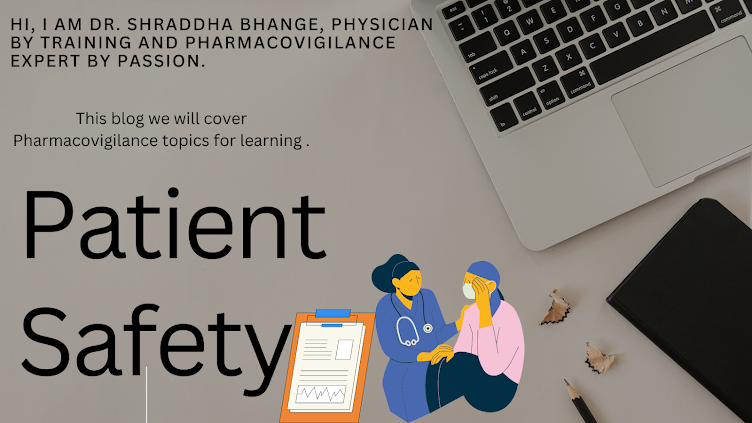In my last blog we talked about what are vaccines and what
are unique challenges in vaccine development and benefits of vaccine.
In this blog lets
cover what are the key differences in vaccine pharmacovigilance.
1.Manufacturing or testing:
Testing of every batch is not done for other drug products. The lot release system is perhaps the greatest difference between the NRA vaccine functions and NRA functions for other medicines
2. Collection of adverse events:
- · Pre-licensure studies (mostly Randomized Controlled Trialss) often identify common and acute negative reactions that occur with a frequency greater than 1 in 10,000 vaccinations, depending on total sample size of the study. Detection of uncommon or rare adverse events, or delayed onset AEs is, however, low in trials.
- · Post-licensure monitoring of vaccine safety is needed to identify and evaluate such adverse events. Post-licensure clinical trials and phase IV surveillance studies are almost mandatory for vaccine safety.
- · Passive surveillance systems (or spontaneous reporting systems) is cornerstone for monitoring vaccine surveillance.
- · AEFI programs are mainstay in terms of ensuring vaccine safety e.g.The Vaccine Adverse Event Reporting System (VAERS) system in U.S and AEFI program in India that collects and analyze vaccination related AE’s separately.
3. Processing of adverse events:
- · Causality- Similar as drug safety but important addition would be, clinical or laboratory proof that the vaccine caused the event. Causality assessment has to be performed for eligible AE’s to ensure to establish if it is vaccine related,immunization errors or coincidental event.
- · Time to onset- Delayed onset reactions due to immunological factors
- · Action taken- This includes risk prevention and risk minimization measures such as withdrawal of the lot, changing manufacturing specifications or quality control, SmPc/PIL update,change in logistics for supplying vaccine,change in procedures at the health facility, training of health workers and intensified supervision.
- · Dechallenge and Rechallenge- This information is not always available or possible
- · Follow up - HCPs (Healthcare Professionals) may hide administration or storage errors,lot number is must which many times is missed.
- · Risk-Benefit assessment –This is done at an community level and not limited to individual level.
- · Safety Reporting forms - This are different for vaccines, e.g.VAERS Form, AEFI form.
4. Reportable AEFI's :
Adverse Event Following Immunization (AEFI)- This are the AEs for which there is mandatory requirement for reporting to MAH (Marketing Authorization Holder) or HA (Health Authority).
- · serious AEFIs,
- · signals and events associated with a newly introduced vaccine
- · AEFIs that may have been caused by an immunization error-related reaction
- · significant events of unexplained cause occurring within 30 days after vaccination
- · events causing significant parental or community concern
- · Swelling, redness, soreness at the injection site IF it lasts for more than 3 days or swelling extends beyond nearest joint
References:
- World Health Organization Global Training Network. "Similarities and differences between vaccines and medicines," In: WHO GlobalTraining Network: Adverse events following immunization (AEFI), Geneva: WHO, 2009
- http://medind.nic.in/iby/t14/i4/ibyt14i4p491.pdf
- https://www.microbiologyresearch.org/docserver/fulltext/jmm/61/7/889_jmm039180.pdf?expires=1563520785&id=id&accname=guest&checksum=CFDFF62D1140C568A15423186A717EFC
- https://pediatrics.aappublications.org/content/138/3/e20162146
- https://www.ema.europa.eu/en/documents/regulatory-procedural-guideline/guideline-conduct-pharmacovigilance-vaccines-pre-post-exposure-prophylaxis-against-infectious_en.pdf
- https://cdsco.gov.in/opencms/export/sites/CDSCO_WEB/Pdfdocuments/biologicals/3GuidanceBioloGicalProducts.pdf
- https://jamanetwork.com/journals/jama/fullarticle/2275444?resultClick=1
- https://cioms.ch/wp-content/uploads/2017/01/report_working_group_on_vaccine_LR.pdf
- https://cioms.ch/wp-content/uploads/2017/01/report_working_group_on_vaccine_LR.pdf
- http://www.wpro.who.int/topics/immunization_safety/ImmunizationSafetySurveillance.pdf
- https://jmm.microbiologyresearch.org/content/journal/jmm/10.1099/jmm.0.039180-0;jsessionid=UqYxJJOAuK-VvmyvN7g9HPSv.x-sgm-live-03#tab2
- http://www.searo.who.int/india/topics/routine_immunization/AEFI_standard_operating_procedures_SOPs_2010.pdf
- http://vaccine-safety-training.org/vaccine-procurement-and-lot-release.html




No comments:
Post a Comment
Please share your suggestions, they are most welcome!